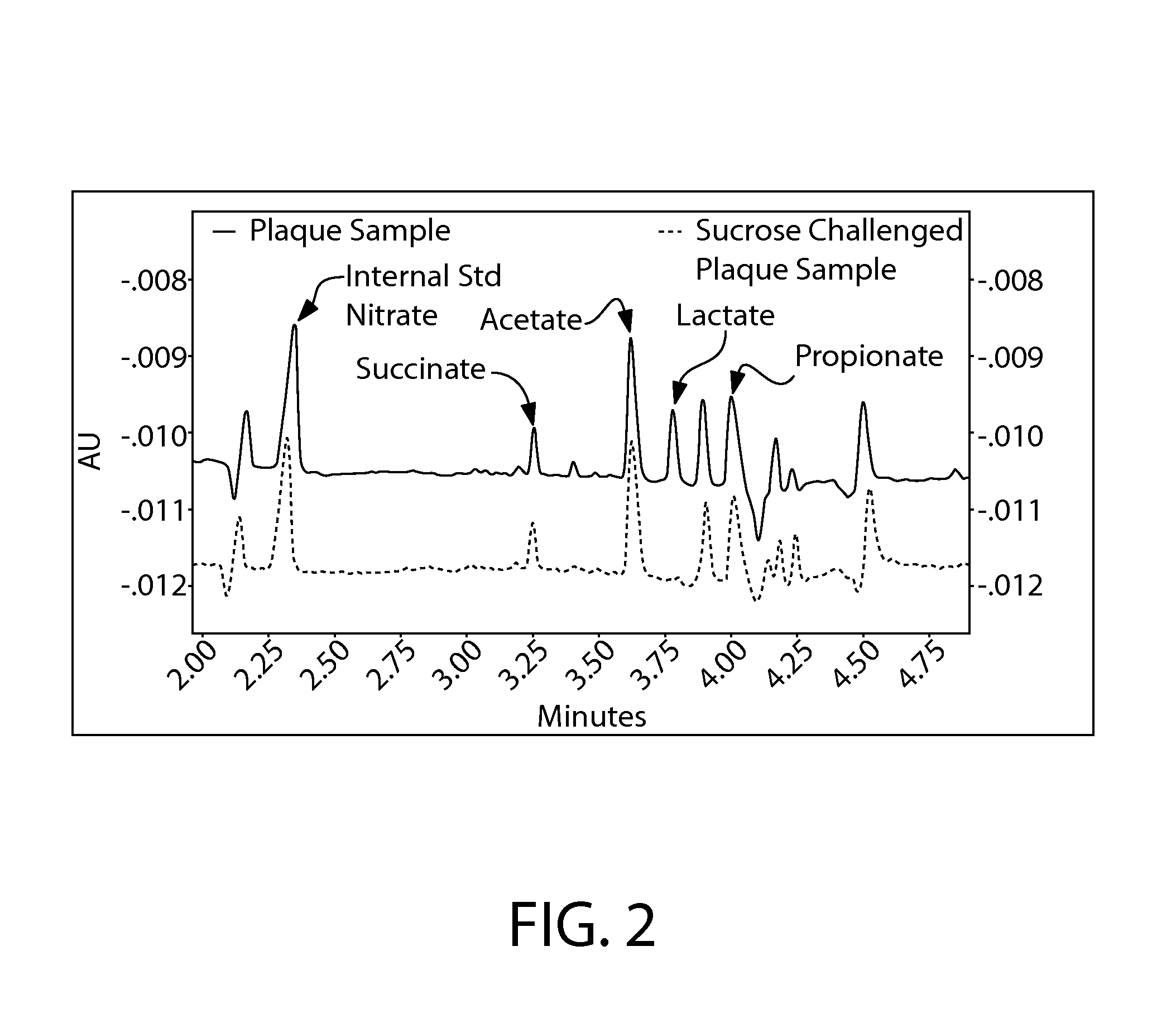Methods of analyzing plaque
a plaque and ammonia technology, applied in the field of ammonia, calcium and acids in plaque, can solve the problems of not all bacteria in the oral cavity are cariogenic or otherwise damaging, the plaque ph is lowered, and the teeth are demineralized, so as to improve oral health, relieve or reduce dry mouth, and reduce plaque accumulation.
- Summary
- Abstract
- Description
- Claims
- Application Information
AI Technical Summary
Benefits of technology
Problems solved by technology
Method used
Image
Examples
example 1
Ammonium And Calcium In Plaque
[0058]Subjects have plaque taken without morning oral hygiene and without eating or drinking from the previous evening. They rinse with a 10% sucrose solution for 2 minutes. After 8 minutes, plaque is collected by scraping the tooth surface(s). Plaque samples are collected on ice in preweighed tubes, and the plaque weight is determined. The concentration is normalized using ultra-pure water. The plaque is diluted to a final approximate concentration of approximately 0.03-0.04 mg of plaque / mL of water and spun down in the water for 30 seconds at 4° C. The plaque is then vortexed into solution and then heated to 80° C. for 5 minutes to kill bacteria and release the ions into solution. The plaque is then placed in an ice / water bath for an additional 5 minutes. The plaque solution is then centrifuged for 15 minutes at 13,000 rpm at 4° C. The supernatant is quickly removed and filtered by a 0.2 micron Nylon centrifugal filter for 3 minutes at 12,000 rpm at 4...
example 2
Acid In Plaque
[0060]The plaque sample is prepared as in example 1. The buffer system used is different: 20 mM 2,6 pyridine dicarboxylic acid and 0.5 mM hexadecyltrimethyl ammonium bromide, pH 5.66. FIG. 2 is an example of capillary electrophoretic analysis of plaque, control and after sugar challenge, using this method.
[0061]In addition to measuring lactic acid in plaque, this method also measures succinic, acetic and proprionic acids in plaque. These organic acids are also important in the process of caries and in subsequent lesion formation. Since organic acids have little or no ultraviolet (UV) absorbance, detection is accomplished using 2,6-pyridine dicarboxylic acid as a background electrolyte (BGE). In this indirect detection method, the BGE has strong UV absorptive properties and produces a high background absorption in the UV detector. In the absence of non-absorbing analytes, the background signal is constant. When ionic analytes are introduced, they displace UV absorbing a...
PUM
| Property | Measurement | Unit |
|---|---|---|
| pressure | aaaaa | aaaaa |
| wavelength | aaaaa | aaaaa |
| capillary electrophoresis | aaaaa | aaaaa |
Abstract
Description
Claims
Application Information
 Login to View More
Login to View More - R&D
- Intellectual Property
- Life Sciences
- Materials
- Tech Scout
- Unparalleled Data Quality
- Higher Quality Content
- 60% Fewer Hallucinations
Browse by: Latest US Patents, China's latest patents, Technical Efficacy Thesaurus, Application Domain, Technology Topic, Popular Technical Reports.
© 2025 PatSnap. All rights reserved.Legal|Privacy policy|Modern Slavery Act Transparency Statement|Sitemap|About US| Contact US: help@patsnap.com


